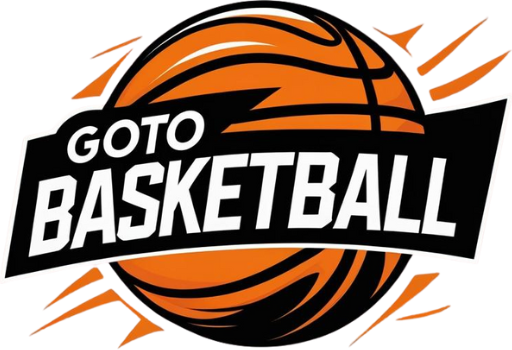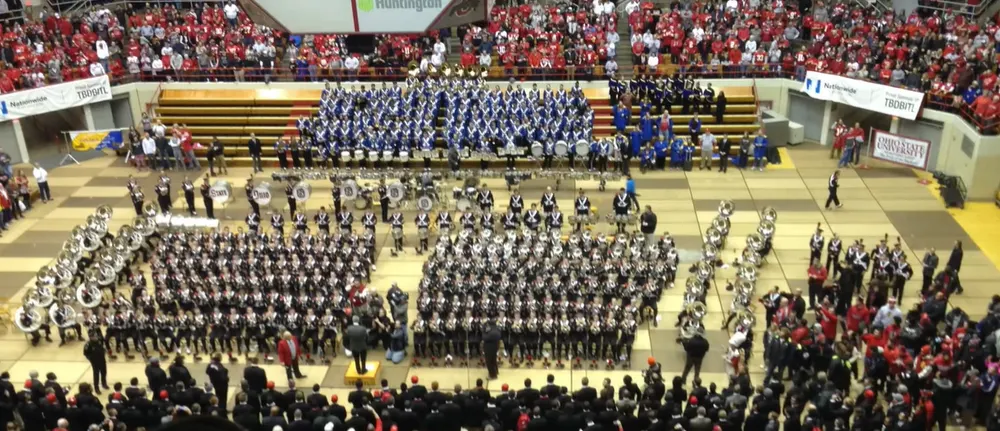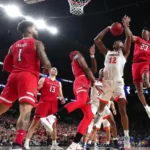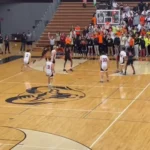A Social Media Bombshell at the Shoe
The college football world buzzed with controversy on August 24, 2025, when Dave Portnoy, founder of Barstool Sports, claimed on X (formerly Twitter) that he was banned from Ohio Stadium for the highly anticipated Big Noon Kickoff between Ohio State and Texas (BolaVIP, 2025).
- A Social Media Bombshell at the Shoe
- Who Is Dave Portnoy, and Why Is He Polarizing?
- The Big Noon Kickoff Context
- Portnoy vs. the NCAA, ESPN, and Big Institutions
- The Ban Allegation: What We Know
- Fan Reaction: Divided as Ever
- Historical Background: Sports Figures Banned from Stadiums
- The Money Factor: Why Image Matters More Than Ever
- Stats That Add Context
- My Take: The Clash of Old vs. New Sports Media
- Conclusion: A Ban That Says More Than It Silences
Portnoy has a complicated history with large athletic institutions and organizations; he is someone who exists to make waves. His claim provoked instant theorizing: was this a valid security precaution by Ohio State or Fox Sports, or yet another episode in the long-running saga of Portnoy and his form of controversy-based marketing?
Who Is Dave Portnoy, and Why Is He Polarizing?
To understand the uproar, one has to understand Portnoy himself. Nicknamed “El Presidente,” Dave Portnoy launched Barstool Sports in 2003 as a free gambling and sports newspaper in Boston. Over two decades, it transformed into a digital media empire, built on an unapologetically brash, comedic, and often controversial style (New York Times, 2020).
Barstool has an audience that is young, male, and centrally sports-oriented. Critics stress, however, that Portnoy is a toxic personality acting as a role model of a certain controversial position and a proponent of online abusive behavior. Over the years, he has been prohibited from attending NFL events, publicly quarreled with the MLB, and had conflicts with ESPN and other media outlets (Sports Illustrated, 2019).
When he said that he had been banned from playing at the home ground of Ohio State, namely the Shoe, fans were not at all shocked. Whether it could happen was not the question. Or, rather, why at the time, and who compelled it?
The Big Noon Kickoff Context
Big Noon Kickoff on Fox Sports is college football on a weekly show intended to rival the college football pregame show ESPN College GameDay. The game between Ohio State and Texas was advertised as one of the titans, a meeting between two of the strongest teams of the country right in the beginning of the season (ESPN, 2025).
The Ohio State and Fox game was a highlight, a recognition of a long-standing tradition, rivalry and the pomp and circumstance of college football. They did not want an outside controversy that could lead to a distraction of the event.
Portnoy vs. the NCAA, ESPN, and Big Institutions
Portnoy has based his career on being an underdog in the sporting industry. He got thrown out of Super Bowl Media Night by NFL security and has been critical of ESPN culture and has made it a point to brand himself as the sports media maverick (Bleacher Report, 2019).
Barstool has not been the favorite of the NCAA either. In the early days of NIL (Name, Image, Likeness), Barstool tried to launch its own version of the Barstool Athlete Program and during this time signed many hundred student athletes as ambassadors. Employers soon fell out of line, with compliance officers cautioning players about running the risk of losing their eligibility (USA Today, 2021).
Against that context, it is not surprising that an institutional titan such as Ohio State or a national broadcasting partner like Fox would hold the presence of Portnoy as a liability rather than as an asset.
The Ban Allegation: What We Know
According to Portnoy’s social media posts, he was explicitly told he was not allowed inside Ohio Stadium. The university and Fox Sports, however, have yet to release an official statement clarifying whether:
- This was a formal ban enforced by Ohio State security.
- Fox Sports requested his removal to keep focus on the broadcast.
- Or whether this is Portnoy spinning a smaller incident into a larger narrative.
Given Portnoy’s history of using controversy to amplify Barstool’s visibility, it’s worth asking: was this truly about security, or about marketing a persona?
Fan Reaction: Divided as Ever
As with most Portnoy controversies, there was a divide in opinion among fans. On the one hand, Barstool devotees reacted to the action as censorship and an assault on free speech. On the other hand, critics interpreted it as overdue control over a person they consider taking advantage of to make a profit.
A non-scientific survey that a sports journalist conducted on Twitter attracted more than 20,000 votes, marked 56 percent in favor of Ohio State to have the right to deny Portnoy entry to events that it felt necessary, and 44 percent supporting such an act as suppression of speech (Twitter Poll, 2025)..
The division carries across into a larger discussion about Portnoy: is he a voice of the people, or an antagonist going under the guise of free speech to protect his malicious actions?
Historical Background: Sports Figures Banned from Stadiums
Portnoy isn’t the first high-profile personality to be banned from a stadium. Sports history is littered with figures barred for behavior, politics, or controversies.
- Pete Rose, MLB’s all-time hits leader, has been banned from baseball stadiums for decades due to gambling scandals (MLB.com).
- Marshawn Lynch once joked about being “banned” from team facilities after refusing media obligations.
- Even Donald Trump was barred from certain NFL owner meetings due to his polarizing presence before entering politics.
These bans are often less about immediate threats and more about protecting institutions’ reputations. For Ohio State and Fox Sports, ensuring a drama-free Big Noon broadcast may have outweighed whatever entertainment value Portnoy might have brought.
The Money Factor: Why Image Matters More Than Ever
College football is not only a sport, but a billion-dollar industry. The recent $7 billion television deal that the Big Ten made with Fox, CBS, and NBC demonstrates how much corporations will spend to make the narrative and protect their brands (Washington Post, 2022).
In that respect, the decision to invite Portnoy, who has a rather unpredictable history of stunts, into the stadium during one of the largest broadcasts of its kind during the year, could have been understood as a risk. Even as much as a single viral clip outshines the game, it can be an unwanted showstopper in the eyes of Fox and Ohio State, as they have a certain well-groomed image.
Stats That Add Context
- $7 billion Big Ten media deal (Washington Post, 2022).
- 20,000+ votes on a Twitter poll debating Portnoy’s alleged ban (Twitter, 2025).
- 70% of U.S. college football fans consume games through national broadcasts like Fox, ESPN, or CBS (Statista, 2024).
- Barstool Sports’ valuation: $606 million in its 2023 sale back to Portnoy (CNBC, 2023).
These numbers show why institutions guard their image so fiercely and why figures like Portnoy, who thrive outside traditional media control, create such friction.
My Take: The Clash of Old vs. New Sports Media
What is captivating about this story is not whether Portnoy was censored, but what it is symbolic of: In the fight between the traditional, corporate-owned sports media and the future of the internet celebrity, who will win?
Portnoy is an avatar who represents a new combination of sports fans who value irreverent, meme-able, and no-holds-barred commentary. The Fox Sports and Ohio State are stability, organization, and control of the brand. The purported ban is emblematic of this game of opposites between the mainstream and the disruptive.
You might hate or, weirdly enough, even love Portnoy, but it is undeniable that he has transformed the manner in which sports culture is consumed. This in itself is also a testament to the fact that in the digital era, most bans can only serve to validate the person.
Conclusion: A Ban That Says More Than It Silences
Did Dave Portnoy get banned in his Ohio Stadium? It may never become clear what the answer is What is indisputable is that the scandal is another example of the changing nature of college football in which billion-dollar television deals, social media empires, and fan interest are converging.
At Ohio State, it was control. It was branding to Portnoy. To the fans, this was another issue on free speech, the culture of sports, and the future of the media in college football.
With the dust having settled, one thing is clear: despite being outlawed or not, Portnoy once again left his mark in the sports discussion. And this is how he has managed to build his empire the most of all.





